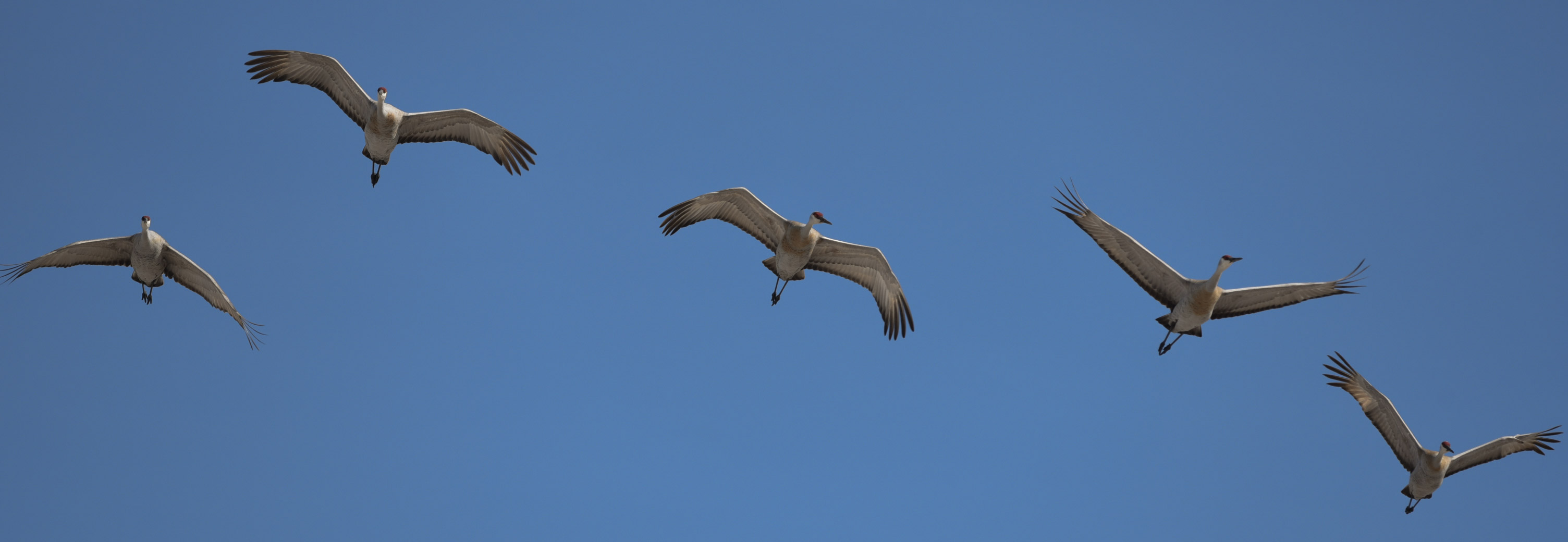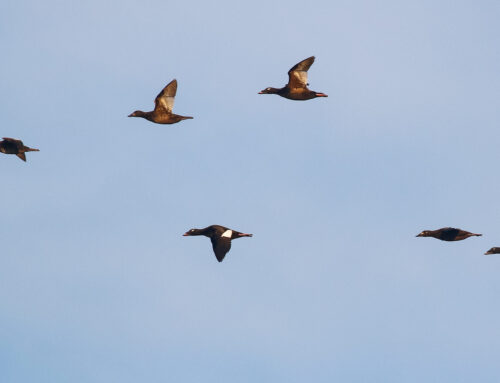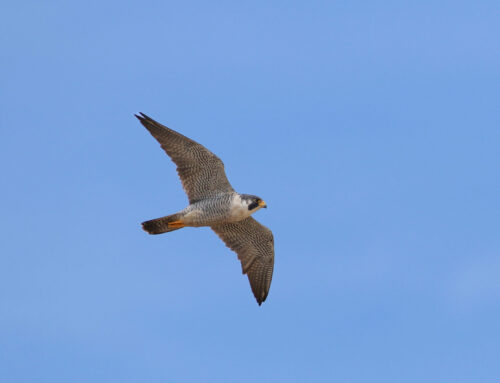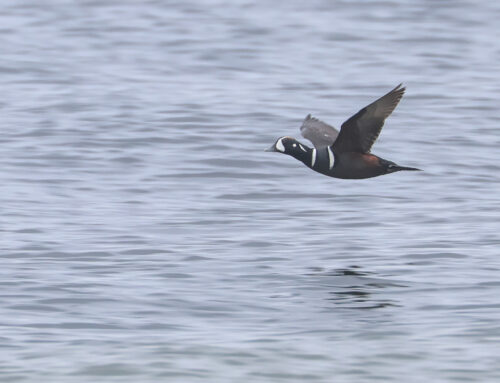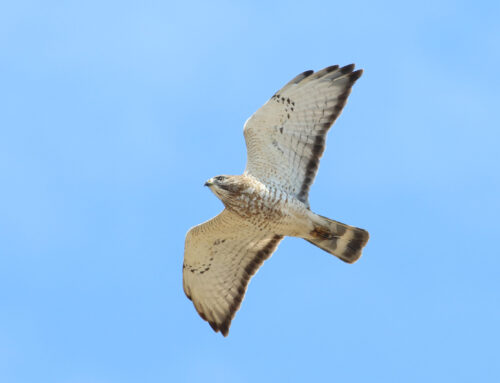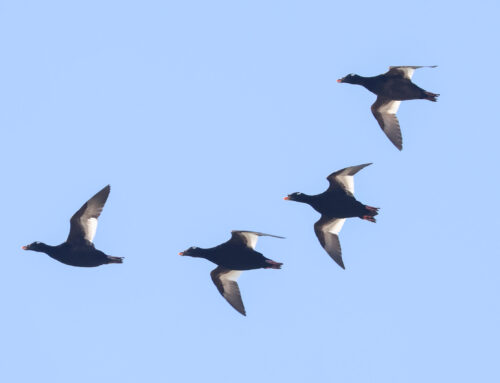Eight hours most days, I stand on Whitefish Point’s cobbled beach. There, from whichever side of the waterbird shack is the lee side du jour, I make sweeping scans with binoculars and spotting scope. To the west is a stand of scrappy jack pines where, this week, a shrike has (albeit with different, more murderous motives than I) joined in the watching of migration. Superior, austere and expansive, wraps around to the north, east, and south. Out there over the Lake–increasingly, as the season progresses and the ice departs–there are birds. As waterbird counter, I have been tasked with finding, identifying, and documenting these birds as they pass by the Point.
To me, this is much more than just a job. It is a high honor to, for six weeks, exist for the purpose of bearing witness to the procession and progression of an entire migration. Where fall migration is longer and more drawn-out (WPBO’s fall waterbird count is double the duration of the spring count), spring migration is intense and condensed, fleeting like the rush of wings as a dabbler flock speeds north. Much must happen in a short window of time, and at this season the urgency of taking it all in becomes amplified. There is so much that merits being seen–that merits being appreciated.
Small squadrons of Red-necked Grebes stream low over the waves and Common Loons, some of them vocalizing, pass by overhead. When the winds shifted south for a few hours this past Monday (April 29), the waterbird count logged 202. Several times within the last two weeks, I counted more than a thousand Sandhill Cranes. On such days, the sky was full of them and ringing with their wild bugling. Every glance down the lakeshore revealed the approach of infinite lines and flocks as far as could be seen. Standing there underneath it all, I shivered–unusually, not just because of the cold.
And so, for eight hours most days, I stand out on the Point watching for movement, identifying that movement–ultimately, documenting it. But as I do this, I find myself increasingly moved by the migration. Many of the birds that pass WPBO are bound for places most humans don’t really go: muskeg or dense thickets flanking wild Canadian streams or even the tundra. The soonest many of these species may be seen again is when they make the fall return. I am more than a little in awe that I get to encounter them now.
Right now at the point, days are entered with the expectation that someone on the field staff will find something new for the season. Recent contributions from the waterbird count include White-winged Scoter (29 April) and Caspian Tern (25 April). Common Loons and Red-necked Grebes are passing through in increasing numbers. An Iceland Gull was seen on 27 April, and a total of 49 yellowlegs (of which 14 were identified to species, as Greater–most individuals were flying in distant, silent flocks) on 29 April whet the appetite for the shorebirds yet to come. The ice is out and the loons are in!
–Alison Vilag, Spring 2019 Waterbird Counter
Feature Photo: One of the many Sandhill Crane flocks that passed over the Waterbird Shack in late April, Alison Vilag.

